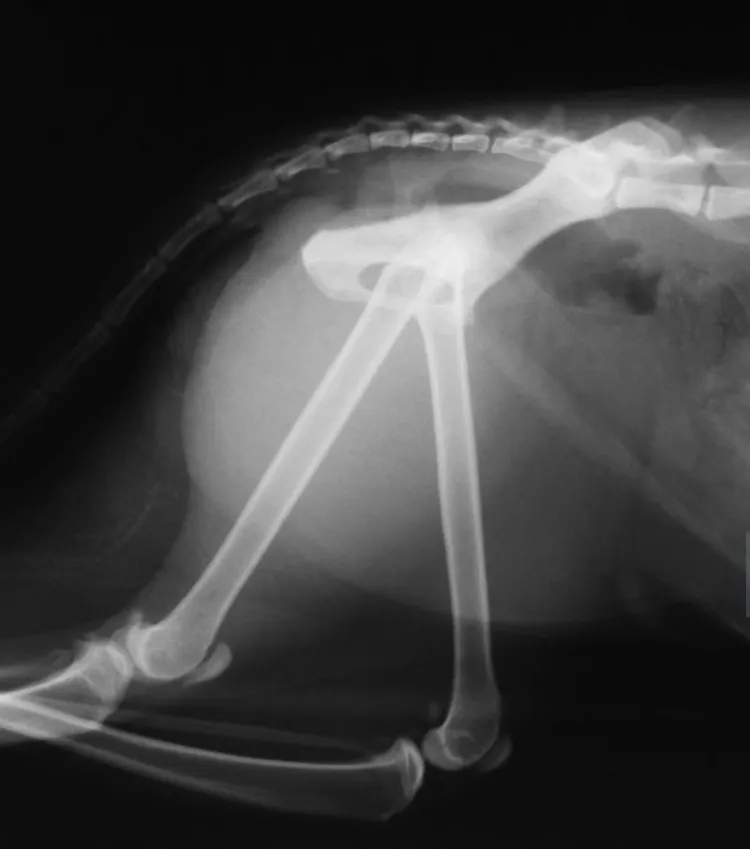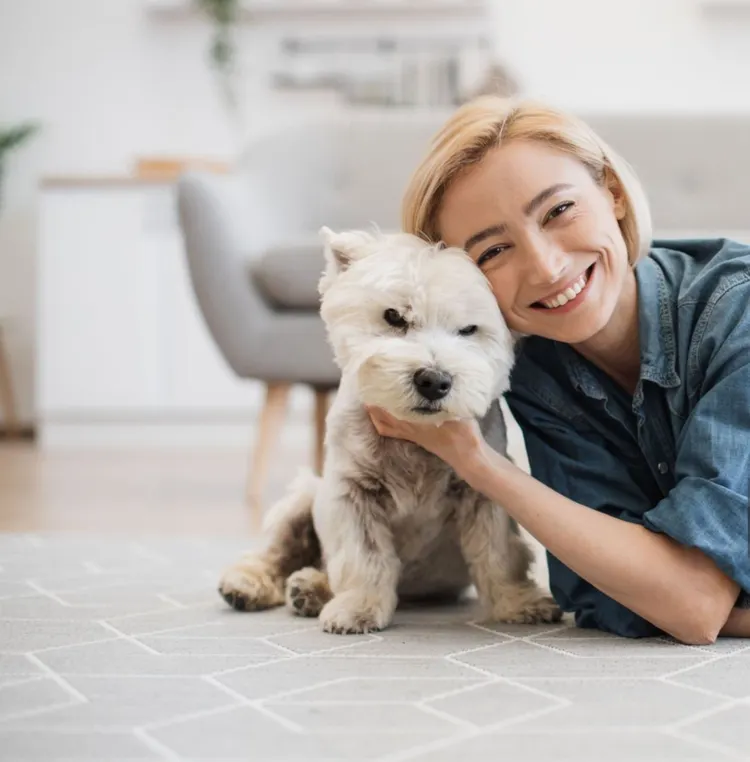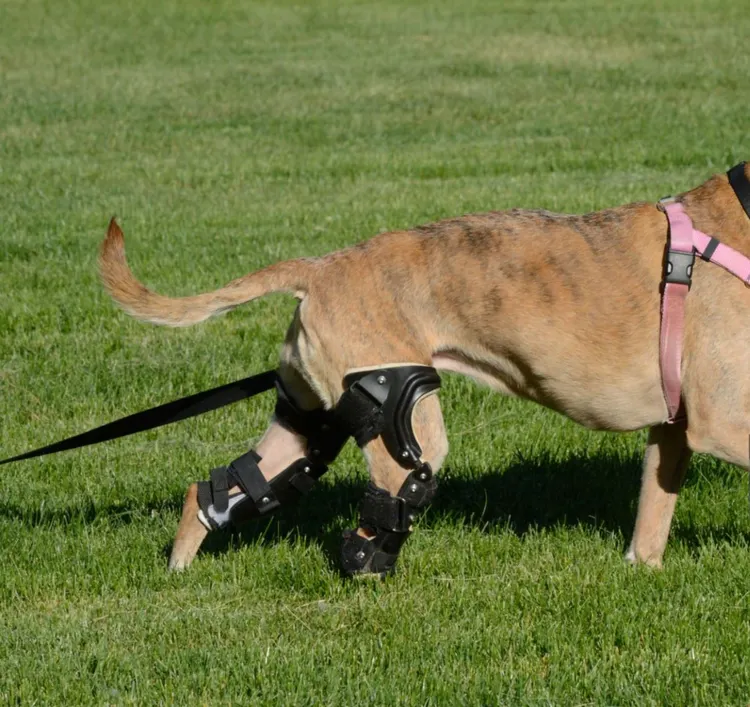You’ve probably noticed that dogs seem to bounce through life with boundless energy, often running, jumping, and playing without a care in the world. But just like humans, their knees (or stifles, as they’re technically called) can take a toll from all this activity. If you’ve ever watched your dog limp or seem hesitant to move, you may wonder if their knees are the culprit. Knee problems in dogs can be quite common, but knowing what to look for and how to help prevent them can make a world of difference for your pup.
Let’s dive into the common knee problems in dogs, how to spot them, and tips on keeping those furry joints healthy and happy.
Imagine your dog chasing after their favorite ball, ears flapping and tail wagging. But after a while, they start limping, and their enthusiastic run turns into an awkward hobble. That energetic zoomie session can sometimes come with a painful price: knee problems. Whether it’s an occasional limp or something more serious, a dog’s knees are as vulnerable as they are crucial. Understanding the key issues that affect a dog’s knees and how you can help prevent them will keep your pup bouncing back stronger.
Common Knee Problems in Dogs
1. Cranial Cruciate Ligament (CCL) Injury
The cranial cruciate ligament (CCL) is similar to the ACL in humans. It stabilizes the knee joint during movement. A CCL injury, especially a tear or rupture, is one of the most common knee problems in dogs.
Signs to watch for:
- Sudden limping or reluctance to bear weight on a leg
- Stiffness or difficulty standing after rest
- Swelling around the knee joint
How to prevent it:
- Maintain a healthy weight: Excess weight puts more pressure on a dog’s knees, increasing the risk of CCL tears.
- Regular exercise: Keep your dog’s muscles strong and their joints flexible with consistent, low-impact exercise like walking or swimming.
2. Patellar Luxation
Patellar luxation occurs when the kneecap (patella) moves out of its normal groove. This condition is more common in small breeds like Chihuahuas and Poodles, but it can happen to any dog.
Signs to watch for:
- Intermittent skipping or hopping on one leg
- A popping sound when your dog bends their knee
- Sudden onset of lameness
How to prevent it:
- Avoid high-impact activities: Jumping from heights or intense twisting motions can contribute to patellar luxation.
- Joint supplements: Consider using natural joint supplements like glucosamine and chondroitin to support knee health.
3. Arthritis
Just like in humans, arthritis in dogs is a degenerative condition that can affect the knee joint over time. Older dogs and large breeds are more prone to this issue, but it can also arise after a knee injury.
Signs to watch for:
- Stiffness, especially after exercise or rest
- Difficulty sitting down or standing up
- Reluctance to run or climb stairs
How to prevent it:
- Keep joints moving: Regular, gentle exercise helps maintain joint function. Swimming can be especially beneficial for arthritic dogs.
- Provide a cozy environment: Soft bedding can reduce pressure on your dog’s joints when they’re resting.
4. Meniscus Injury
The meniscus is the cartilage that cushions the knee joint. When it tears, it can cause significant pain and discomfort. Meniscus injuries often accompany CCL tears.
Signs to watch for:
- Sudden lameness that doesn’t improve
- Audible clicking or popping sounds from the knee
- Reluctance to bend the knee
How to prevent it:
- Strengthen the muscles: Strong muscles around the knee reduce strain on the meniscus.
- Controlled exercise: Avoid rapid changes in direction or speed during play, as these can increase the risk of meniscus tears.
Tips for Detecting Knee Problems Early
Being aware of your dog’s movement and behavior can help you detect knee issues before they become severe. Here are a few things to watch for:
- Watch for limping: A noticeable limp or favoring one leg could indicate knee pain.
- Check for swelling: Swollen knees are often a sign of inflammation or injury.
- Monitor your dog’s playfulness: If your typically energetic dog becomes reluctant to play or run, it could be due to knee discomfort.
- Look for changes in posture: Pay attention if your dog starts sitting with one leg extended or moves awkwardly when standing up.

Preventing Dog Knee Problems: Practical Tips
Knee problems can happen at any age, but with some proactive measures, you can reduce the risk of injury and keep your dog’s knees in tip-top shape.
1. Healthy Weight Maintenance
Excess weight puts more strain on your dog’s joints, increasing the risk of injuries and arthritis. Keep your dog at a healthy weight with a balanced diet and regular exercise.
2. Low-Impact Exercise
While every dog loves a good romp, high-impact activities can wear down the knee joints. Opt for low-impact exercises like walking, swimming, or controlled play to keep your dog active without overloading their joints.
3. Joint Supplements
Supplements like glucosamine, chondroitin, and omega-3 fatty acids can help keep your dog’s knees healthy. These natural supplements support cartilage and reduce inflammation, making them a great preventive tool for long-term joint health.
4. Provide Slip-Proof Surfaces
Slippery floors can lead to slips and injuries. Consider adding rugs or mats to provide better traction for your dog indoors.
5. Regular Vet Checkups
Annual vet visits help catch early signs of knee issues. Your vet can assess your dog’s gait, check for joint pain, and recommend treatments if needed.
6. Massage and Physical Therapy
Gentle massages around the knee area can help improve blood flow and relieve tension. Some dogs may also benefit from physical therapy, which includes exercises tailored to strengthening the knee joint and surrounding muscles.

Dogs rely on their knees for every step, jump, and sprint they take. Whether it’s an active breed that loves to play or an older dog beginning to slow down, paying attention to knee health is key. By understanding common knee problems, detecting them early, and taking steps to prevent injury, you can keep your dog running, jumping, and enjoying life without any painful setbacks. And remember, a healthy lifestyle—combined with love and care—goes a long way in keeping your dog’s joints in excellent condition.



